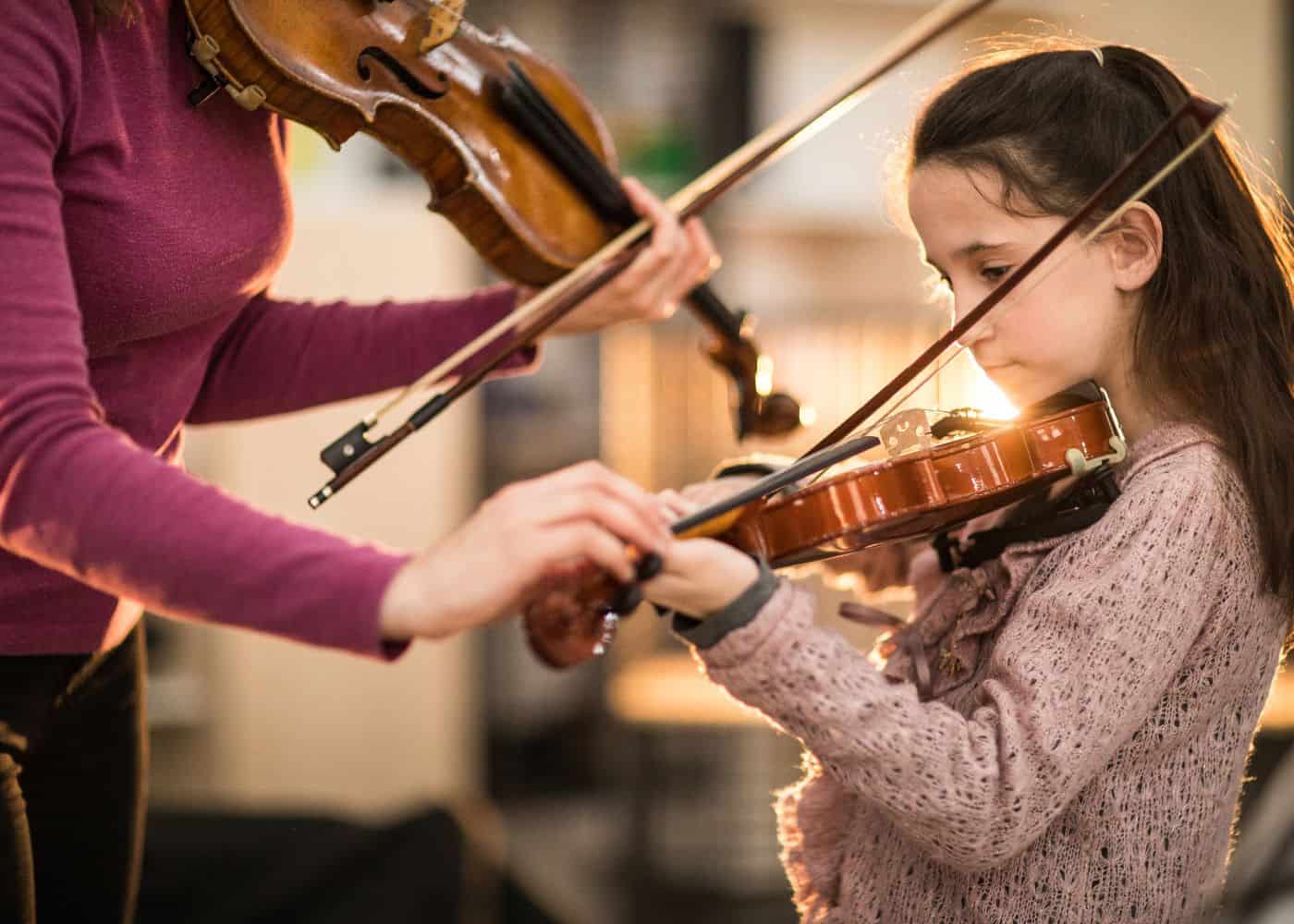Learning music is a beautiful journey for you and your kids, but it can be electrifying and difficult all at once. We all want our children to experience the magic of melodies and rhythms. And yet, we often find ourselves wondering how best to introduce them to this wonderful world without overwhelming them.
Benefits of Learning Music for Kids
Learning to play a musical instrument can be a rewarding experience for children, fostering skills like discipline, patience, and creativity. The magic of music is a gift that keeps on giving, especially for children. The journey through melodies and rhythms offers various benefits, from cognitive enhancement to emotional growth.
Cognitive Development
Educational music lessons are instrumental in boosting intellectual development among kids. Grasping musical notes and understanding rhythm patterns sharpens their memory skills, enhances attention span, and fosters logical thinking abilities. Research indicates that participating in educational music lessons can have a positive impact on academic achievement.
Incorporating new vocabulary words into songs or nursery rhyme dances makes language learning more enjoyable for little ones too. This explains why teaching tunes full CD downloads like those available at the Learning Station Music are so popular among parents.
Social-Emotional Growth
Beyond sharpening mental faculties, music plays a pivotal role in nurturing social-emotional development, too. Group sessions like choir practice or band rehearsals promote teamwork while encouraging peer cooperation.
Whether strumming super simple songs on guitar strings or mastering complex compositions on a single instrument – expressing oneself musically boosts self-esteem levels while building confidence within young hearts.
Nurturing Life Skills
Award-winning music programs specifically designed for youngsters often weave life skill-building elements along with technical training. Disciplines like patience and perseverance are all crucial attributes required beyond the world of harmonies learned during these classes.
Besides a structured approach towards learning, free exploration of sounds without any set rules (think banging pots and pans.) stimulates creativity, making them comfortable with the experimentation process that extends far beyond boundaries.
Building Physical Coordination
Physical coordination can be significantly improved by incorporating dance moves into your child’s routine. Dancing along to fun action songs like ‘Monster Shuffle’ or ‘Penguin Song’ helps enhance gross motor skills and provides ample exercise.
Mastering Resilience With Practice
Learning how to play an instrument isn’t an easy ride; it demands consistent effort, dedication, and resilience. As
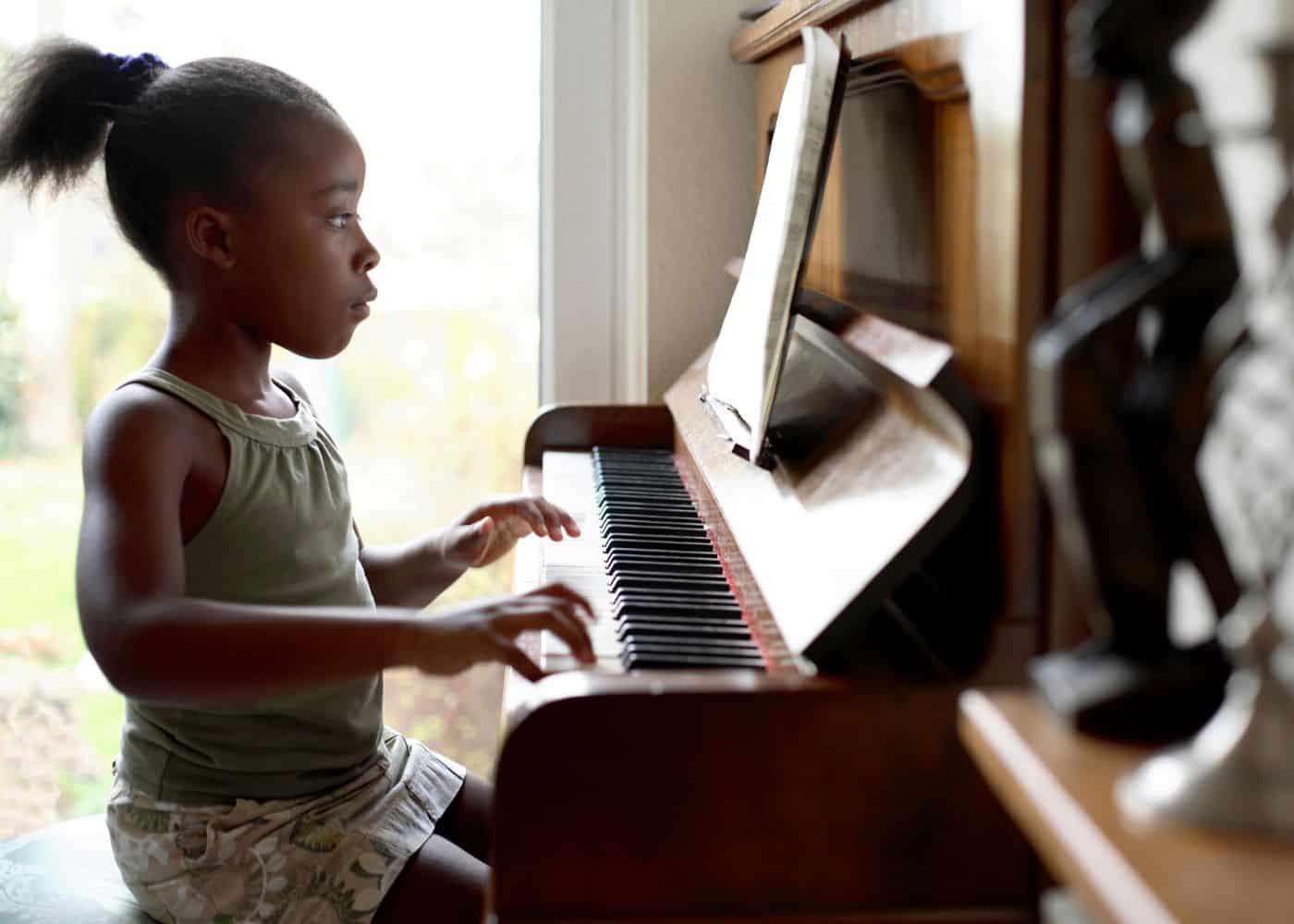
Introducing Music to Your Child
Beginning your kid’s musical experience starts with acclimating them to the idea of music. This can be as simple as playing a variety of songs around the house or using educational music lessons online. The goal is to expose them to different sounds, rhythms, and melodies.
Children are naturally curious creatures who love exploring new things. So don’t hesitate to let them interact with various instruments. They could alternate playing on a piano one day and strumming a guitar the next. You’ll soon notice their interest piquing in certain areas.
Familiarizing Them With Popular Songs
Songs that become hits among kids often have catchy tunes, repetitive lyrics, and sometimes even an associated dance routine. A great way for kids to start learning about music is through familiar tunes such as nursery rhymes or fun-time action songs. They’ll also build confidence in group settings that include songs during circle time, as the words and melodies will be familiar.
Here are some popular children’s songs:
- “Twinkle, Twinkle, Little Star” – A bedtime staple for many families.
- “Wheels on the Bus” – A traditional song that has been loved for generations.
- “Old MacDonald Had a Farm” – An animal-themed classic.
- “Baby Shark” – A catchy newer tune with millions of YouTube views.
- “If You’re Happy and You Know It” – A clapping and action song for younger kids.
- “Head, Shoulders, Knees, and Toes” – Great for learning body parts and keeping kids active.
- “BINGO” – A traditional song about a dog, with a repetitive structure that kids love.
- “Five Little Monkeys” – This song incorporates counting and is often accompanied by jumping or other actions.
These songs can differ in popularity based on current trends, new movie releases, and other cultural factors.
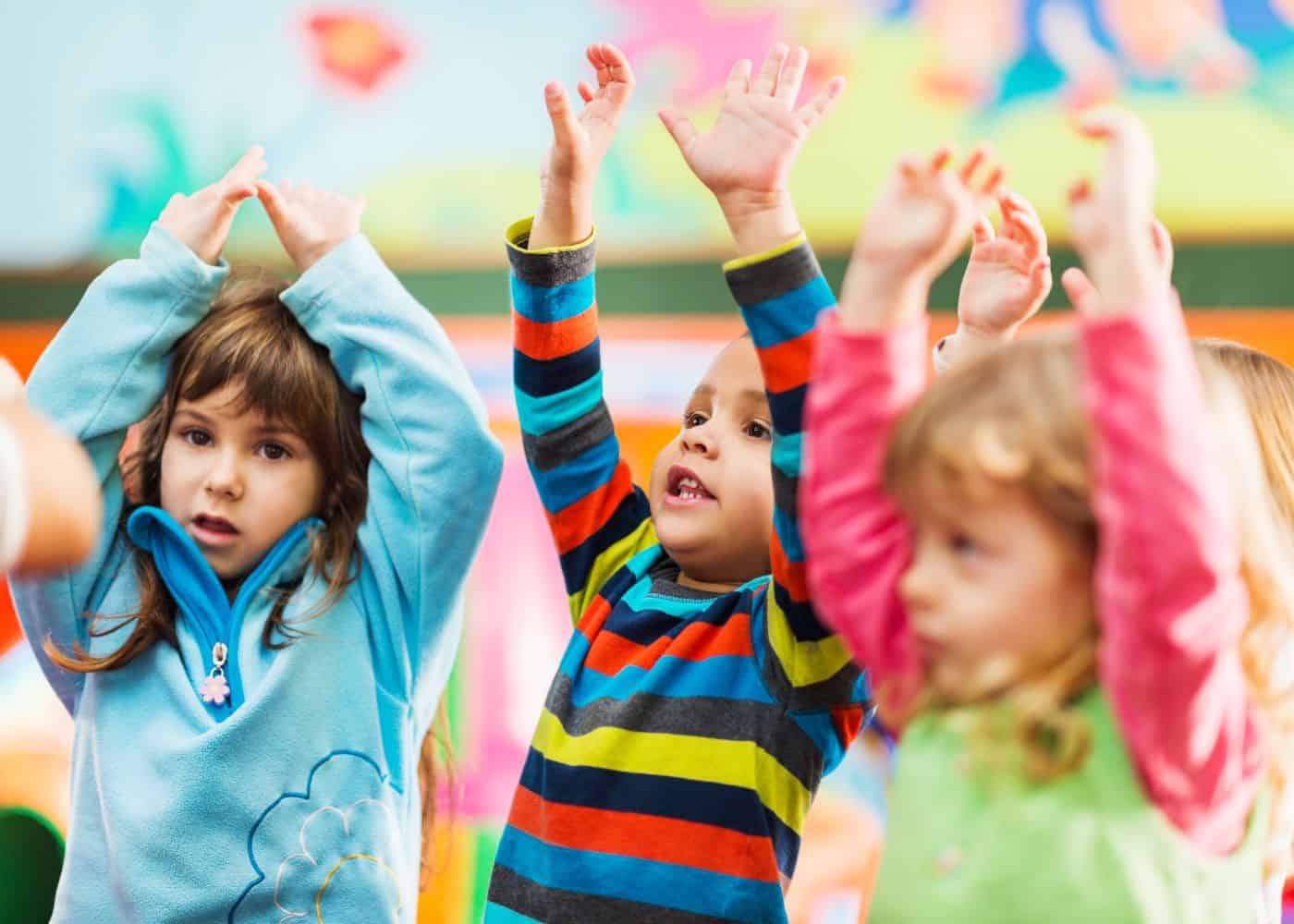
Incorporating Musical Games
To keep your child engaged while learning about music, try incorporating games into their routine. There are many online platforms where children click on interactive elements related to musical notes or rhythm patterns – these not only make learning enjoyable but also reinforce core lessons focused on understanding key concepts behind each tune.
You may also introduce various types of music through Super Simple Songs, or let them discover games featuring different instruments on free learning channels such as PBS Kids Music Games.
Dancing Along To The Beat
Another effective method when introducing kids to music involves encouraging movement and listening exercises – think nursery rhyme dance routines or doing the freeze dance together. Dancing helps children understand rhythm better because they feel it physically instead of just hearing it.

Developing Musical Skills
The art of music is a world full to the brim with possibilities for children. But it’s not just about mastering the notes on their favorite instrument or nailing that nursery rhyme dance.
Cognitive Development Strikes a Chord
Musical activities are like brain workouts disguised as songs. From core lesson focus areas such as pattern recognition and problem-solving – they all contribute towards mental agility. Here are some basic ways that learning music can help cognitive development in kids:
- Solving complex rhythms can improve mathematical abilities.
- Remembering melodies enhances memory capabilities.
- Picking up new instruments promotes adaptability and resilience.
A Harmonious Social-Emotional Tune
Beyond cognition lies another layer where developing musical skills is integral – fostering emotional intelligence within young learners. Group performances teach cooperation, while solo pieces build confidence.
Theory & Practice Combined
Music theory is much easier to learn when you start young. Honing any skill requires both theoretical knowledge coupled with practical application. For instance, understanding how different notes work together harmoniously equates to theory, whereas applying these concepts by strumming those very same chords translates into practice.
Fostering Creativity
Lastly but certainly no less important is nurturing creativity within our little maestros. Let your child make up their own songs and make up their own accompaniments to their favorite songs or YouTube videos. They can write out “sheet music” and record their singing.

Choosing the Right Instrument
The initial step in your child’s musical journey is selecting an instrument. It can feel like a daunting task, but it’s crucial to find that single instrument that aligns with your child’s interests and abilities.
Finding Your Child’s Interest
Your little one might already be drawn towards certain instruments. Maybe they’re captivated by piano keys or intrigued by guitar strings? Their inclinations could provide valuable insights into what will engage them most.
Here are some of the most popular musical instruments for kids to learn:
Piano
The piano is often recommended for young beginners because it provides a straightforward way to understand musical concepts like pitch and harmony. The notes are right there in front of you, so you don’t have to go through the scratchy-note phase of stringed instruments.
Violin
Violins come in various sizes (including incredibly small instruments for 3-4-year-olds), making them accessible for young children. They’re also a staple in school orchestras. The kids will sound scratchy for the first few years, but its much better to go through this phase as a young child than an adult.
Ukulele
The ukulele is small, lightweight, and relatively easy to learn, making it perfect for younger kids. It can also be used as a stepping stone to guitar.
Guitar
The guitar is portable and versatile, offering a wide range of musical styles. Plus, kids often find it “cool.” Most players start with an acoustic guitar. Those with smaller hands may want to start with a 1/2-size guitar or even a baritone ukelele.
Drums
Drums are great for kids who like to move and have a good sense of rhythm. However, they can be loud and take up space.
Trumpet
The trumpet is another popular instrument for kids and is another common choice in school bands. Even preschoolers can make a decent sound with good instruction, and elementary schoolers can learn to play a few notes with the three valves.
Considering Age and Physicality
Choosing the right instrument often depends on factors like the child’s age, physical capabilities, and personal preferences, as well as logistical considerations like the cost of the instrument and availability of lessons. Regardless of the instrument chosen, learning to play music is a wonderful opportunity for kids to express themselves and develop a range of valuable skills.
When choosing suitable instruments, your kid’s age and physical development are key factors. For instance, smaller kids might struggle with larger ones like cellos, while older children may not feel challenged enough by small recorders.
Remember: The goal isn’t just finding something manageable now; you want to choose something that continues challenging their creativity throughout the years ahead.
Evaluating Commitment Level
Becoming proficient at any musical tool requires commitment – this includes regular practice sessions, possibly even lessons from professionals offering prodigies music lessons programs specifically designed for kids’ needs.
If you sense more fleeting interest than genuine passion in your kid toward learning an instrument, starting off with less expensive options such as harmonicas before investing heavily into costlier equipment would be wise.
Picking Instruments That Grow With Them
A great resource where core lessons focus on basic principles applicable across many other tools later down their line if they decide to switch gears eventually. It’s not just about finding what fits right now; it’s also considering what will continue challenging them creatively while still remaining fun throughout the years ahead.
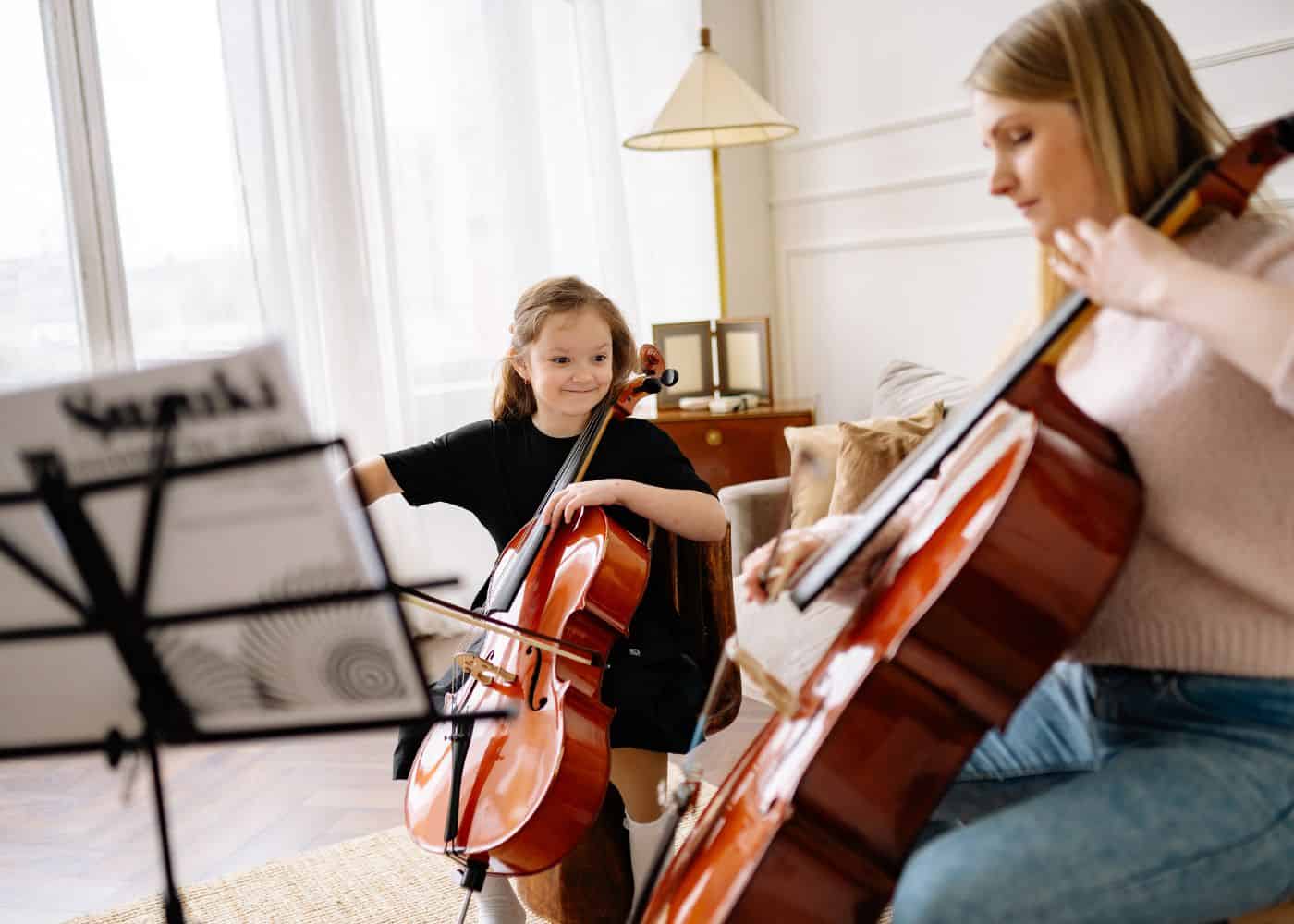
Finding Quality Music Lessons
Embarking on a musical journey is an exciting adventure for children. The cornerstone of this expedition? Top-notch educational music lessons that ignite their passion and enhance their abilities.
Diverse Platforms for Learning
The first step in finding quality music education lies in choosing the platform where these classes will take place. Traditional face-to-face instruction can be as effective as online platforms such as Prodigies Music Lessons, which offers programs specifically tailored for kids. Moreover, free learning channels today are readily available on various video-sharing websites like YouTube.
Selecting A Comprehensive Curriculum
A well-rounded curriculum should strike a balance between developing fundamental skills while keeping interest alive through fun time action songs or nursery rhyme dances.
Look out for curriculums offering single song downloads dozens of times over different sessions – it’s about building upon each lesson progressively without overwhelming young learners.
In addition, some courses integrate favorite videos from popular children’s shows into their syllabus, providing another layer of engagement.
Evaluating Lesson Quality
- Award-Winning Tracks: High-quality classes often use award-winning music within their syllabus because renowned tracks engage students more effectively than lesser-known ones.
- Sufficient Practice Material: Check if performance tracks are included alongside regular instructional material – they provide students with realistic conditions under which to practice what they’ve learned.
Tailored Approach To Teaching
An ideal program caters not just to collective needs but also to individual preferences; every child learns differently, after all. For instance, some may prefer focusing solely on one instrument initially before exploring others, whereas there might be those who enjoy alternating between instruments.
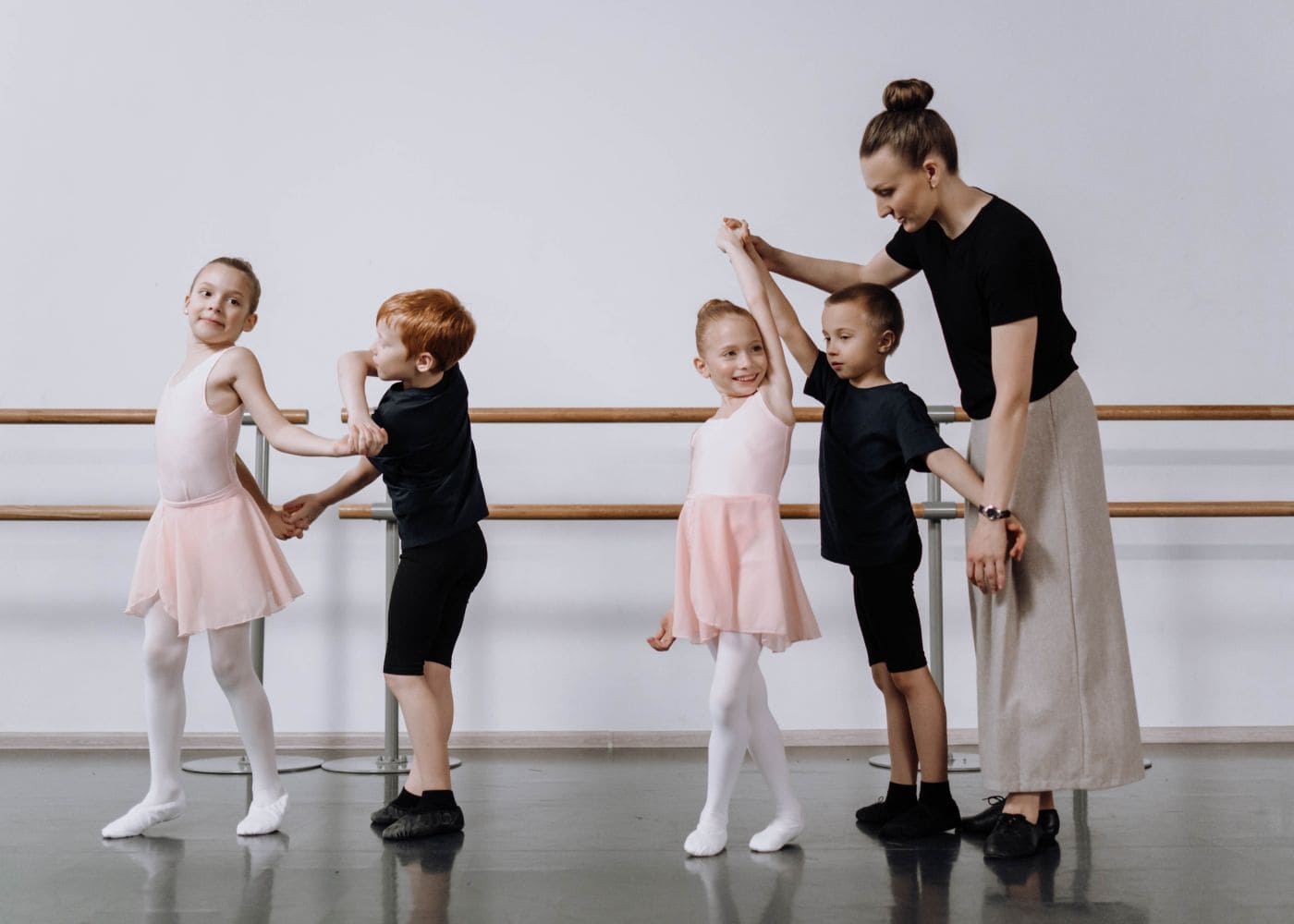
Making Music Fun for Kids
Learning music can be a delightful adventure filled with joy and discovery. Creating an enjoyable learning experience tailored to all children’s needs is key to successful music education.
Blending Educational Music Lessons with Playtime
The fusion of education and play is an excellent strategy when teaching kids about music. Websites like Learning Station Music offer educational tunes specifically designed for young learners that incorporate interactive activities alongside core lessons focusing on musical fundamentals.
Finding Age-Appropriate Musical Content
To maintain your child’s enthusiasm while learning music, it’s crucial to find content appropriate for their age group. Introducing award-winning tracks from various genres broadens their horizons and keeps things interesting.
Promoting Creativity Through Alternate Playing Methods
If practicing a single instrument starts feeling monotonous over time, encourage alternate playing methods. For instance, if they have been focusing on piano lessons, perhaps they could experiment with performance tracks available on CDs or browse sections of different websites. This not only promotes creativity but also ensures they continue to enjoy the process.
Scheduling Regular Daily Practice Sessions
Scheduling regular daily music practice sessions offers many benefits for children, both academically and personally. Here are some key advantages:
Skill Development and Mastery
Consistent practice helps children progressively improve their musical skills, encouraging a sense of mastery and accomplishment.
Discipline and Time Management
Regular practice instills a sense of discipline and helps children manage their time better. It teaches them to prioritize tasks and adhere to a schedule, valuable skills in various aspects of life.
Emotional Well-being
Playing music can be an emotional outlet, allowing children to express themselves. It can also have therapeutic effects, reducing stress and promoting relaxation.
Enhanced Cognitive Skills
Research has shown that musical training can improve various cognitive abilities, including memory, attention, and spatial-temporal skills. It can also improve literacy skills like reading and verbal memory.
Boosts Self-Esteem and Confidence
Regularly hitting milestones, however small, can boost a child’s self-esteem and confidence. This positive self-image often translates into other areas of life.
Creativity and Expression
Practicing music stimulates creativity. As children become proficient, they can experiment with different sounds, compositions, and styles, further developing their creativity and personal expression.
Academic Advantages
Studies have shown that students who practice music regularly often perform better in subjects like math and science, as the skills required for musical training can translate into academic performance.
Social Skills
If the practice includes group sessions, ensemble performances, or recitals, children have the opportunity to improve their social and teamwork skills.
Problem-Solving Skills
Learning to read music, mastering a complicated piece, or troubleshooting a challenging melody all cultivate problem-solving skills.
Sense of Commitment
Regular practice develops a sense of commitment and responsibility, teaching children the value of sticking with something even when it’s challenging.
Parent-Child Bonding
For younger children, practice sessions can also serve as quality time with a parent who is involved in the learning process.
Incorporating daily music practice into a child’s routine can thus offer a rich tapestry of benefits that go far beyond simply learning to play an instrument. It can be a comprehensive way to foster essential life skills and personal development.
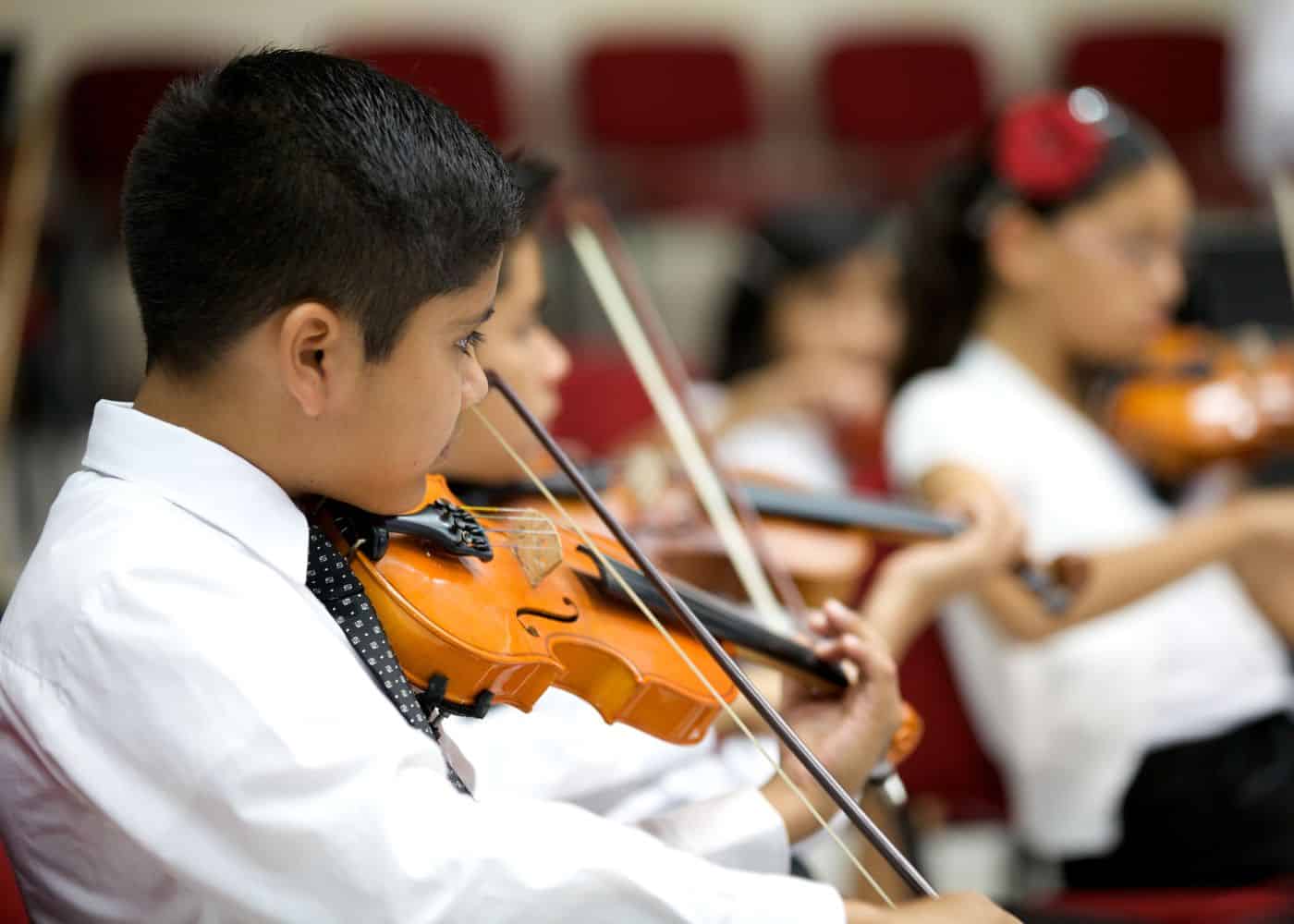
Understanding Different Genres of Music
Music is a rich and varied tapestry, each genre possessing its own distinct features, history, and cultural importance. Navigating these different genres can significantly enhance your child’s musical journey.
The Significance of Diverse Musical Exploration
Introducing children to a wide range of music genres cultivates an appreciation for all types of music. It expands their understanding beyond popular songs or those in their favorite videos.
Different styles present distinct rhythms, melodies, instruments, and lyrical themes that stimulate kids’ minds differently. For instance, classical compositions are known for complex structures enhancing cognitive skills, while folk tunes often tell stories, sparking imagination.
Nursery Rhymes And Children’s Songs
No doubt nursery rhymes and children’s songs are a part of a kid’s life – think how quickly they picked up Monster Shuffle. These catchy tunes introduce basic rhythm patterns and also aid in language development with memorable lyrics.
Kids may find joy participating in nursery rhyme dance sessions or joining programs specifically designed for this type where they can track multiple kids’ progress together.
Classical Music
A good starting point when introducing your child to various genres could be Classical Music. Renowned for masterpieces by composers like Mozart and Beethoven, this genre offers numerous educational benefits, such as improved concentration due to its structured nature.
Jazz
Jazz, another significant genre worth exploring, encourages creativity through improvisational elements not found in other forms. Pieces allow alternate playing styles less rigid than those found within classical compositions, making it perfect to foster individuality. Your little one will likely enjoy discovering games around jazz standards and even trying out some performance tracks themselves.

Encouraging Practice Time
The journey to musical mastery is a marathon, not a sprint. It’s all about consistency and regular practice. But let’s be honest… convincing your child to commit to routine music sessions can sometimes feel like an uphill battle.
No worries, though. Here are a few tested tactics to help you motivate your child for regular practice time without making it seem like an obligation.
1. Establish A Consistent Routine
To make practicing less of a task and more of an enjoyable activity, incorporate it into their daily routine. Find the best time slot in the day when they’re relaxed yet alert – perhaps after school or before bedtime?
Aim for short but frequent (daily) practices rather than long but infrequent (weekly) ones; this approach aligns better with children’s attention spans while ensuring steady progress on their musical journey.
2. Set Tangible Goals
Beyond just making routines, setting achievable goals helps keep kids motivated during educational music lessons as they have something concrete to strive towards. These objectives should resonate with the core lesson focus instead of merely playing songs from start to finish.
3. Use Tech To Keep Things Interesting
We live in exciting times where technology has made access easy. Leverage platforms offering prodigies music lessons, explore single song downloads dozens available online, or tune into a free learning channel today.
Your kid might enjoy watching favorite videos whilst practicing along with them, which makes alternate playing fun. Or discover games-related methods to keeping things interesting.
Remember: The aim isn’t necessarily raising prodigy musicians but nurturing a love for music.

Exploring Musical Opportunities for Kids
The world of music is vast and filled with opportunities. From local concerts to international competitions, the possibilities are endless for your little ones.
Local Concerts and Live Performances
Your child’s musical journey can start right in your community through local concerts or performances. These events offer an immersive experience where kids not only listen but also observe how musicians interact with their instruments and audience. They might even hear super simple songs they recognize.
School-Based Music Programs
Beyond live performances, school-based programs specifically designed around educational music lessons provide another fantastic resource. Here, core lessons focus on developing musical abilities while making learning fun with action songs. For instance, nursery rhyme dance routines could become part of their curriculum.
Musical Festivals and Competitions
Both regional and national level music festivals and contests serve as stepping stones towards bigger stages if your child shows significant interest in playing a single instrument and has the kind of personality that enjoys competitively performing on the stage. The goal isn’t just winning – it’s more about enjoying the process.

